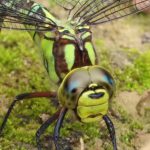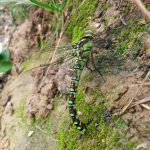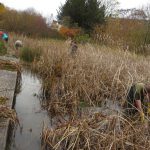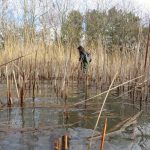Ponds, Sutton’s Ponds
In my last blog post I attempted to explain the importance of reed beds and how we assist with their conservation at the SNCV. Being breast deep in silty, thick, stenching water, while shifting literally tonnes of reed was exhausting work. To cap it off, I’d turn up to Yoga in the evening, ponging of dank pond water, smelling similar to the miasma that wafts up your nostrils when walking over a blocked drain. Not ideal when in downward dog Adho Mukha Svanasana or at any time really. And yes I had showered. To get to the point, it’s fair to say that I would have been pleased to see the cobwebs settle upon the waders. But no, it was back into the water, this time to manage the ponds at the Ecology Centre, Carew Manor Wetland and Caraway Place.
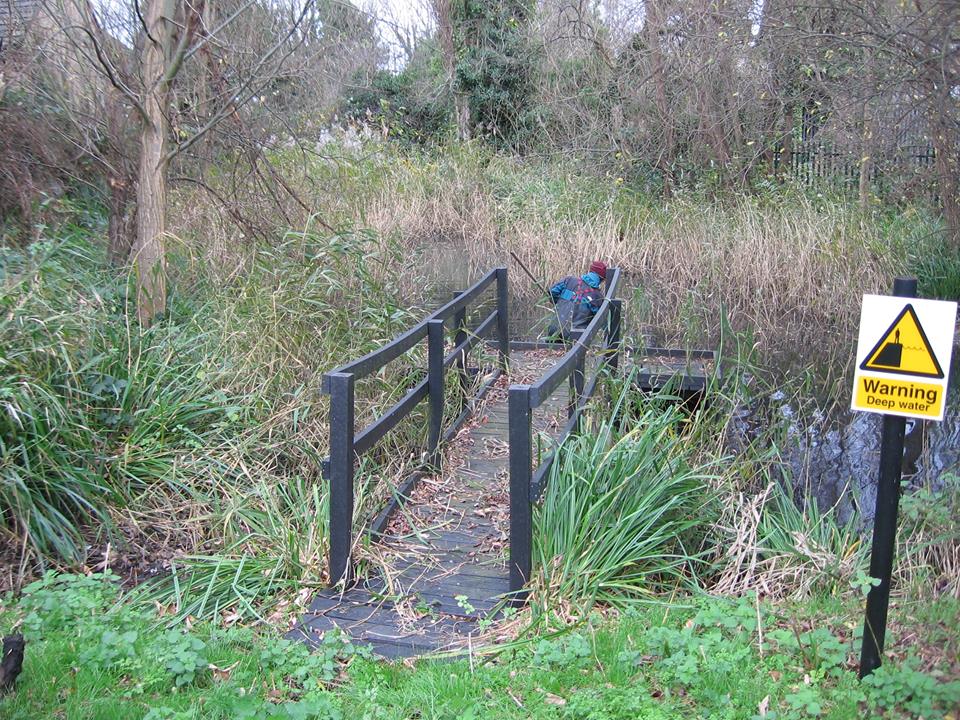
Getting the waders on at Wandle Valley Wetland
UK Pond Condition
The Joint Nature Conservation Committee (JNCC) and the archived UK Biodiversity Action Plan (BAP) (page 59), describe ponds as small, permanent or seasonal water bodies, up to two hectares in size. These habitats are incredibly import for nature and support more than 100 UK BAP priority species (those identified as being the most threatened and requiring conservation action). Worryingly, according to the Wildlife Trust, research suggests that 80% of ponds are in ‘poor’ or ‘very poor’ condition, whilst 50% of the UK’s ponds were lost in the 20th Century. Reasons for this are similar to those causing the depletion of a number of our priority habitats and include urbanisation, pollution, agricultural drainage and land use change. Therefore, where we have a pond, it is vital it is managed appropriately in order to ensure its conservation.
Wildlife Management
As guided by Sutton’s Biodiversity Team, the main aim of our pond management is to create structural heterogeneity and develop a mosaic of micro-niches and habitats. By doing this, we hope to create conditions that are salubrious for a variety of wildlife, not just a limited few. To achieve this, having a diversity of aquatic vegetation is essential, as plants provide structural diversity, oxygen, habitats and food. Ideally, ponds will contain a variety of emergent plants (such as yellow iris Iris pseudacorus, sedges, rushes and water mint Mentha aquatica), submerged plants (such as spiked water-milfoil Myriphyllum spicatum and starwort Callitriche spp.), floating plants (such as frogbit Hydrocharis morsus-ranae, algae species and lilies Nymphaea spp. ) and deadwood.
Having aquatic flora diversity is critical for a number of our British invertebrates. For example, during their life-cycle, dragonflies will utilise the various niches provided by aquatic vegetation. Damselflies and the hawkers are endophytic egg layers (lay eggs in plant material and mud), while the larvae/nymph requires abundant growth of submerged water plants in order to both hide from predators and ambush prey. In their adult form, dragonflies will use floating plants to perch and absorb heat for flying and mating. Therefore, having this diversity of flora is fundamental for the life-cycle of our native dragonflies.
- Up close with a female southern hawker Aeshna cyanea. Snapped at Dave’s dragonfly course.
Ponds and the SNCV
At the Ecology Centre, the pond had large amounts of bulrush Typha latifolia, after its summer growth. Without management, this species can quickly choke the pond and reduce the establishment and growth of other species. Therefore, our main task was to remove patches of this species in order to allow greater levels of light to access the pond. With greater exposure to sunlight, it is hoped that this will encourage the growth of various emergent, submerged and floating plant species that are already present.
- The team tackling the Typha at the Ecology Centre.
In addition, by removing some of the vegetation from the south facing bank of the pond, we will create suitable conditions for frog-spawn and potentially increase their chances for survival. Frog-spawn requires warmth, light and a healthy supply of algae in order to develop into their carnivorous form. Thus, by improving light conditions and creating space for algal colonies, we should see an abundance of common frog Rana temporaria hopping around the Ecology Centre come spring.
The incredibly important reed Phragmites australis (see previous blog post) is also present on the pond, and is currently in the condition where it requires minimal management. We were careful not to disrupt this grass as it creates a dense marginal habitat that facilitates the breeding and nesting of a moorhen Gallinula chloropus, a frequent visitor to our pond.
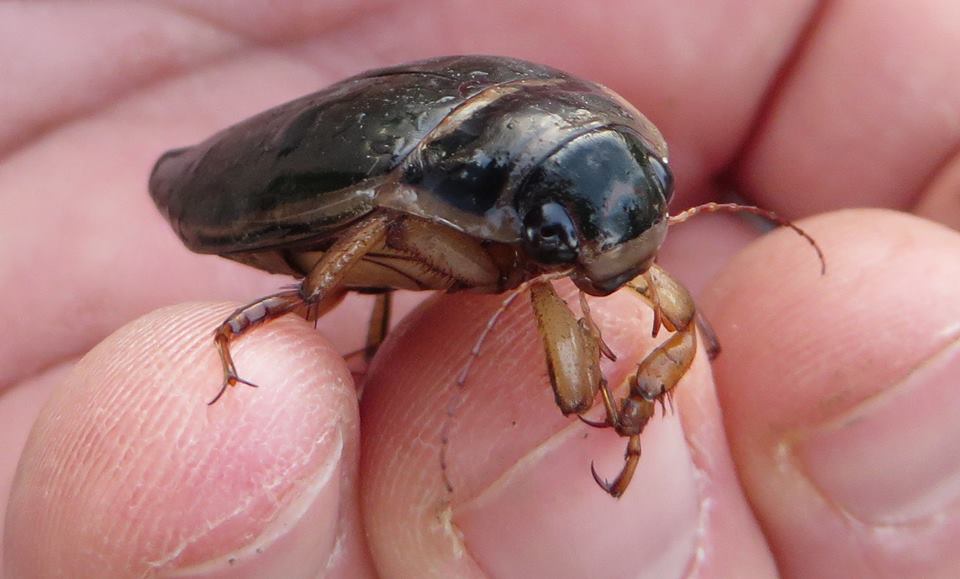
A great diving beetle Dytiscus marginalis found during our pond management in December.
Future Events at the SNCV
Though knowing relatively little about ponds, my work with the SNCV has certainly taught me to appreciate them more. In the spring and summer they provide a wonderfully serine space and will be teeming with exciting wildlife. Sutton’s Biodiversity Officer runs a fantastic dragonfly day where you will explore our ponds for the critters and hopefully get some great sightings (see above picture). There are also various pond dipping ventures for children, so do check the events page to see if there is anything that takes your fancy in the spring and summer months.
JARGON CORNER
George Orwell – “Never use a foreign phrase, a scientific word, or a jargon word if you can think of an everyday English equivalent.”
Endophytic – ahh, this is a word I learnt on Dave’s Dragonfly course. Simply, in references here it means laying eggs in plant material. If on tonight’s University Challenge, Paxo asks – “What is the term used to describe dragonflies that deposit their eggs inside plant material? “, then you’re welcome.
Structural heterogeneity – this is a frequent phrase I use on my blogs as it is so important to our conservation management at the SNCV. Simply, it means trying to create as many layers of vegetation as possible, I think.
Salubrious – this was the word of the day from www.dictionary.com, so I thought it would be rude not to squeeze it in.
Miasma – this was the word of the day from our final task day before Christmas. I may have used this in the wrong context, but heigh-ho.


